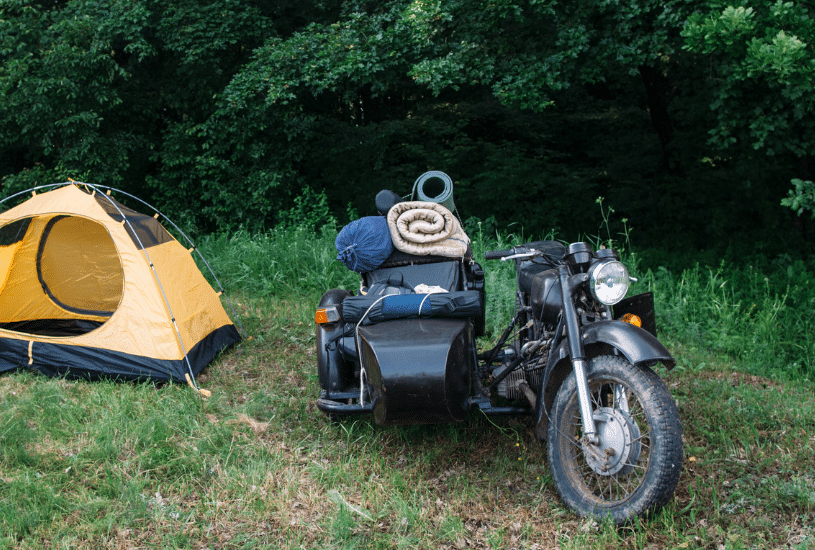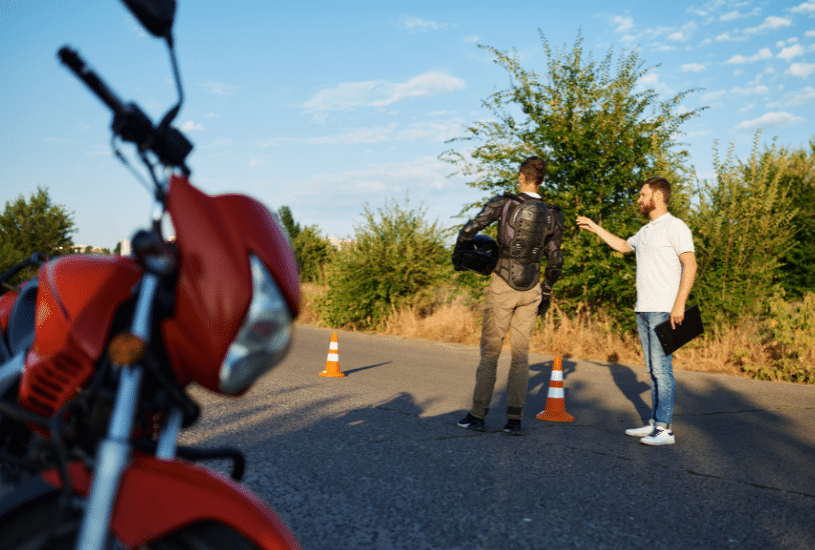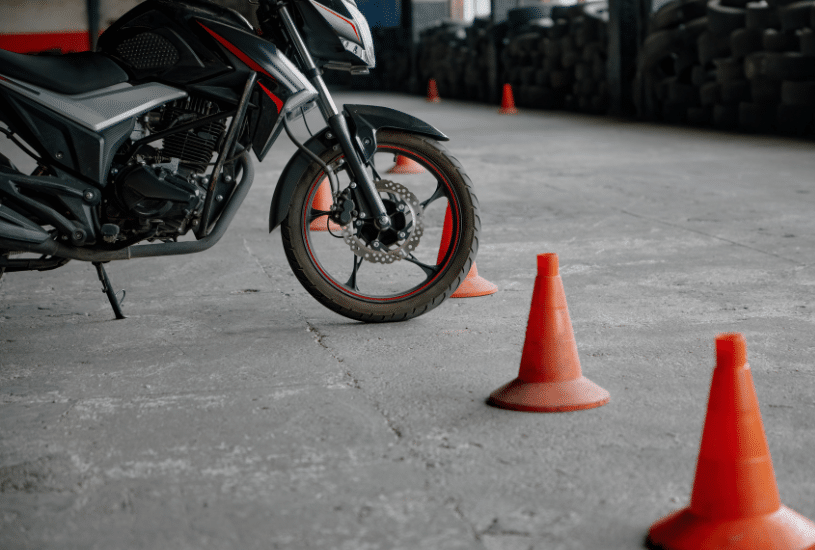The motorcycle riding lifestyle is all about individualism, the open road, and enjoying your surroundings as you harness the power of finely tuned machine. Inclement weather has never been something to stop the adventurous, but it is certainly a different form of riding than normal conditions.
So the answer is yes: you can ride a motorcycle in snow or icy conditions, but it can be quite dangerous if you’re not accustomed to it. That’s why we’ve put together this guide on how to ride in the cold, and we hope you take the time to look it over before facing winter roads.
How to Ride in Snowy or Icy Weather
The last thing you want to do is sit inside and feel trapped because of some inclement weather. As long as you respect the elements and adjust how to ride accordingly, you should be able to handle most of the milder winter weather.
The first thing you need to do is prepare your bike for the season; wear and tear will be higher in a number of ways, so make sure to take the following precautions before ever hopping on your bike:
- Clean your bike, and change the oil and filters: The smoother the ride, the less chance of a hitch or a mechanical issue during cold weather.
- Oil the cables and lube the throttle/clutch: The same premise applies here – a caught cable is often a snapped cable, and the easier all of these parts move during snowy riding conditions, the safer you will be.
- Protect your gear: Because the climate is harsh on everything during snow season and the roads will have extra mud and grime to kick up, you should spray your electronics with a corrosion inhibitor such as ACF-50. Make sure to avoid surfaces you interact with, as it will make them exceptionally slippery.
- Check all your essentials: You should do this during all weather, but especially if it is threatening outside. Check your brakes, tires, battery, coolant, and lights before you go out to ride.
Once you have prepped your bike, it’s time to venture out into a winter wonderland (ok, or maybe just dreary weather that stops you from getting up to speed) with some adjusted road rules. To begin with, you must be acquainted with the different types of snowy, icy, or cold conditions and how they differ when it comes to bike reaction.
- Motorcycle Riding on Fresh Snow: So long as you can see the sides of the road and the sides surrounding it, this should be some of the easier snow to ride in. The snow will compact under your tires, allowing you to grip as the grooves are filled with the powder. You should avoid rapid acceleration or sharp turns, but the bike should be able to handle reasonably normally if the snow is not too deep.
- How to Ride a Motorcycle on Compacted Snow: For lighter flurries that have already been driven on, it can be easy to think that the easiest move is to drive in the existing tire tracks. However, these can be polished and slippery, and you can even get stuck in them depending on the angle and condition of the road. We recommend taking a slightly offset approach to the tracks if possible, and being especially careful on turns.
- Riding a Motorcycle in Slush: During the last phases of a snow cycle, the road will be cleared of snow piles and the melt off will create slush. This is when it is most dangerous for motorcycle riding, as black ice can be present and can cause you to skid out if you are not careful. This is compounded because your tires will actually have the most grip relative to other snowy conditions, so it is easy to get exciting and rip it, but we highly recommend taking a cautious approach instead.
Regardless of the type of snow, we still preach ATGATT (all the gear all the time). To begin with, you’ll be much warmer, and similarly, you’ll be fully protected in the event of mishaps on the road. Much of getting through adverse conditions on a motorcycle comes down to common sense, respecting your bike, and paying attention to your surroundings, and snowy weather certainly is no different in that respect.
Are There Different Weather Laws in Different States?
Most states have unique motorcycle riding laws. Some states will require different tires or chains, though many of the laws are specific to all motor vehicles relative to weather.
Make sure to consult your state’s department of motor vehicles to see if there are specific laws for both weather and motorcycle-related mandates.
What Types of Motorcycles are Best for Riding in Snow?
While you could probably make a case for cruisers, or different wider set bikes to be safer vs. sleeker and sportier bikes, the answer isn’t always so simple. Our base answer is that the best and safest bike for winter season is the one you’re comfortable on – this is to say that unless you are planning your riding style around the specific winter months, it is more important to follow the safety precautions and laws in place.
If you want to check out our list of best motorcycles in general , some of the middle-weight bikes on that list would fare well in snowy weather. Mostly though, comfort and sensibility will win the day every time you hop on a bike.
Ride Stress-Free with The Law Tigers
At The Law Tigers, we’re dedicated to helping the riding community feel safe during each and every ride. Riding is in our blood, and we take care of our own. Rain, shine, or even snow – we’ve got your back.
If you are looking to have the best legal representation for motorcycle injury accidents, get in touch with our team today. We’d love to get you set up with our free rider benefit card as well to protect you now and in the future.



